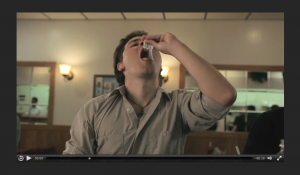The trick to successful teaching and learning is getting our students engaged and interested in the lessons we are teaching. So why not connect their lessons to aspects of their lives to which they can relate when possible? Well, unfortunately, that is far easier said than done, but luckily this is not one of those cases. Nearly every day over half of my students (in all of my high school classes) have some sort of soda or energy drink. So, naturally, I went with a lesson that ties their love for soda to my love of their math.

This particular lesson was found on Mr. Dan Meyer’s website at: http://threeacts.mrmeyer.com/sugarpackets/
(others can be found at https://docs.google.com/spreadsheet/pub?key=0AjIqyKM9d7ZYdEhtR3BJMmdBWnM2YWxWYVM1UWowTEE&output=html)
The Sugar Packets lesson aligns with the 6th grade common core standard 6.RP.A.3 which states “Use ratio and rate reasoning to solve real-world and mathematical problems, e.g., by reasoning about tables of equivalent ratios, tape diagrams, double number line diagrams, or equations.”
Though I mentioned above that my focus is with high school students, I think that beginning with a more simple lesson and then making modifications later to align with the high school standards would work more effectively for the students with whom I am currently working.
First, the students watch a 37 second video demonstrating that drinking soda, something that is completely acceptable by the majority of society, is equivalent to just eating so many packets of sugar, an act that most people would deem disgusting or unnecessary. So, why then, are we, as a society, so okay with drinking soda? After watching the video the students are to guess how many packets of sugar are in a 20 oz bottle of soda.
Then, the students are shown the so-called nutrition label of a 20 oz bottle of coca cola as well as a standard packet of sugar (the teacher could also bring in a bottle of soda and the 16 packets of sugar to show better proportions).
The third step of this lesson is to show students how many packets of sugar are actually in the bottle of soda.
This lesson could be modified for high school statistics and probability: (Summarize, represent, and interpret data on a single count or measurement variable CCSS.MATH.CONTENT.HSS.ID.A.1: Represent data with plots on the real number line (dot plots, histograms, and box plots).) by having students find the sugar content of other popular foods/drinks and have them graph the data based on volume of the drink and amount of sugar. Then, the students can see if there is a correlation with mean, median and standard deviation.